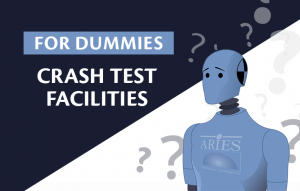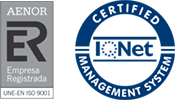Modern vehicles come filled to the brim with most-advanced safety measures that ensure the protection of everyone involved, and car manufacturers will add state-of-the-art features to reduce the possibility of accidents. However, despite the inclusion of these preventive measures, accidents do occur. In the United States alone, about 6 million car crashes are reported annually, and a significant percentage of them are fatal.
By law, all modern vehicles are built to handle accidents in a way that minimizes injury to the occupants inside the cabin, the occupants of other vehicles, as well as pedestrians.
Crash testing is one of the most accurate and realistic ways of identifying how a vehicle will perform during an accident. Public and private organizations around the globe use the results of crash tests to give safety ratings to vehicles, and this information can influence consumers’ decisions.
In the West, The National Highway Traffic Safety Administration (NHTSA) and the Insurance Institute of Highway Safety (IIHS) are some of the recognizable names in automotive crash testing. In the East: The China Automotive Technology and Research Centre (CATARC), China Automotive Engineering Research Institute (CAERI), and the Korea Apparel Testing and Research Institute (KATRI).
All these organizations contribute to the development of safety regulations, and a few of them have developed safety rating systems based on the vehicle’s performance during crash tests.
In-house and Independent Testing Facilities
During the development of their vehicles, OEMs can choose either to test their vehicles in an in-house facility or an independent testing organization. The independent organizations’ facilities, which also have to be approved, are usually used when the demand exceeds their operative testing capacity.
Independent organizations’ facilities are more efficient since they are specially designed for the job. However, the most notable automobile or components manufacturers still choose to do their own crash tests because of the various advantages of in-house facilities.
The biggest advantages of an in-house testing facility are privacy and confidentiality. Most manufacturers perform crash tests and confirm the safety performances in all the stages of the vehicle’s development, from the prototype phase to the final design of all the product configurations.
The market is saturated, and a cut-throat competition exists among the different companies. In such a competitive market, this means that mistakes could be potentially fatal for organizations. Testing can reveal major flaws during the design phase, and this could have an impact on the vehicle being able to catch its target market if the information is leaked ahead of time. Testing internally increases confidentiality and minimizes the chances of information leaks. That’s why OEMs are so protective of their designs and features.
There are many other advantages of in-house testing, such as faster data processing, swifter rectification of identified errors, and a lower testing cost. However, as already mentioned, manufacturers still rely on independent facilities, both to get diversified data and to reduce the burden on their facilities when there is a backlog in the number of tests.
Testing Standards and Types of Crash Tests
To be rated by any of the most recognized organizations, a vehicle goes through multiple tests to determine its crashworthiness. Most of these tests are performed physically by wrecking real specimens, but some of them use advanced numerical calculations with the support of simulation tools instead.
The types of crash tests a vehicle goes through before getting a rating:
- Frontal Impact Test
- Moveable Progressive Deformable Barrier (MPDB) impact test
- Side Impact Test
- Rear Impact Test
- Pole Impact Test
Preparing For a Crash Test
Crash tests have a regimented process with a number of prerequisites. You do not have the luxury of making mistakes and trying again when it comes to these tests. Testers need to get everything right in one go.
People’s lives depend on it so the margin of error is very small.
Preparing any vehicle for a crash test is an elaborate process. You have to empty the gas tank, drain off all of the other fluids, mark all sections, take measurements, and perform a plethora of tasks before the car is ready. As well as all of this, you still have many more checks to conduct before proceeding with the test. For example, making sure that the testing instruments are calibrated and checking the condition of the dummies are just some of the additional tasks that you need to perform.
The outcome of each test also depends on the perfect condition and configuration of the propulsion system, the lighting systems, the high-speed video camera set, and other integral systems.
Therefore, testing facilities are usually equipped with a specially designed workshop and different calibration and maintenance laboratories to ensure a smoother testing process.
Designing a Crash Test Facility – Things to Consider
Before you start planning to invest in a testing facility, there are multiple things to consider. Ultimately, vehicle testing regulations will influence the design of your facility. In the following sections, we’ll go through the most important elements and the must-haves for any modern crash testing setup.
Testing area and capabilities
The crash testing area comes first. Naturally, it should be big enough to accommodate multiple testing modes and allow for simultaneous testing. The area must have enough excess space to allow for further expansion in the future depending on your requirements. Additionally, it is recommended to have a covered testing area because it’s easier to maintain confidentiality and carry out the tests in a controlled environment.
The total area available has a direct impact on all the other determining factors. From the testing capabilities to the nature of supported vehicles, everything is affected by the size of the area. Therefore, this is an important consideration when establishing a testing facility.
Available equipment
Another element for an efficient crash testing facility is timely access to all of the state-of-the-art equipment. Proper equipment facilitates the testers and enhances the overall safety of the facility. Moreover, high-quality instruments give the best results with the utmost consistency.
Some of the equipment any major crash testing facility will use:
- Propulsion and guidance system (different tracks)
- Fixed or moveable impact block
- Fixed impact barriers (offset, pole, small overlap, etc.)
- Different standard carts and deformable barriers
- High-intensity LED lighting systems
- High-speed filming cameras
- Crash test dummies with varying capabilities
- Thousands of sensors
- Data acquisition systems
- 3D geometrical measurement devices
Having some of the following auxiliary systems is also preferred:
- Speed meters
- Static rollover
- Ramps
- Moveable platforms and wheeled dollies
- Crash simulation test systems
Flexibility
Another important factor many testing facilities overlook is the flexibility of the entire setup. The regulations that govern the crash testing industry are not set in stone and are regularly subjected to changes and upgrades. New testing methods might replace the current ones. Companies invest a lot in their testing facilities and can’t afford to uproot the entire system if it fails to meet the demands of new regulations.
Taking these expected (or unexpected) regulations into consideration, testing facilities must come with enough flexibility to allow any minor changes in the infrastructure to meet any new requirements. A recent example is the global consumer’s shift to electric vehicles. The rating criteria for EVs is the same as any other vehicle. However, the same facility can’t be used without additional precautions. Electric vehicles use heavy batteries that may cause fire, explosion, or suffer corrosive leakages. Flexible testing centers that quickly adapted to these requirements were able to establish their name in the market while others were left behind.
Available scope
Crash testing is not a monotonous process and several variations are used to create the most realistic conditions. How will a moving vehicle react if it crashes into a stationary object, or a stationary vehicle? What will happen if two moving vehicles crash into each other?
A crash test facility should be versatile and designed with the capability to adapt and continue delivering results to answer such questions.
Safety standards
Maintaining strict safety and security standards to ensure the protection of the personnel involved is one of the regulatory requirements. It’s also important to remember that operational safety and efficiency must never be compromised. Fortunately, with advances in robotics and other technological fields, maximum safety can be ensured without any effect on the process efficiency.
These are only some of the most basic measures that ensure a safe testing environment:
- Automation of operation.
- Safety sensors for smoke, fires, or toxic gases.
- CCTV surveillance system with infrared capabilities.
- Automatic extinguishing systems to put out different types of fires.
- Active ventilation and exhaust systems adapted to the tests.
- In case of an indoor facility, the building design must comply with the current regulations.
Current Limitations and the Future of Crash Testing
Computer simulation technology is light-years ahead of where it was 10 years ago and if we consider the law of accelerating returns, it will continue to grow exponentially in the coming years.
In this scenario, one may ask. Does crash testing have a future?
John Capp, the Director of Global Safety at GM, believes that crash testing will still be important in the future. He explains: “There’s still a place for physical crash tests, for example, to validate the models, confirm the performance, or in cases where the simulation capability is still evolving.”
Despite the elegance of virtual testing, there are still a lot of variables that can’t be simulated. In such instances, physical crash tests are a necessity. Today, most manufacturers use a combination of various simulations and physical crash tests to come up with the most accurate results.
Furthermore, electric vehicles also need a complex set of new sensors and additional safety precautions before and after testing. Batteries tend to explode, so there must be extra safety features to address this problem and ensure that the after-effects of crash-damaged batteries remain under control.
How Can ROBOTICS Help?
Now that you are aware of what is required to build a first-rate crash testing facility. The next question is: where to start?
We, ROBOTICS, have been a part of this industry for more than three decades. We understand the challenges automobile manufacturers face when setting up the most-advanced crash testing facilities. With our company’s experts, you’ll have both the skills and experience needed to tackle all of them.
Our award-winning services can fulfill all of your testing needs. Whether you need a full-fledged testing facility or even a small pendulum system, we’ll be there every step of the way to guide you and help you make the best decisions according to your resources. ROBOTICS has a history with companies like Honda, BYD, Chery, PIMOT, Ford, GM, and Suzuki; component manufacturers like Faurecia, SMP, or Autoliv; universities, and test and research centers. For the last 30+ years, we have worked with companies of all sizes and have been delivering excellence across the globe.
ROBOTICS has been awarded the ‘Crash Test Facility of the Year’ by the Automotive Testing Technology International Review twice in the last decade. From conceptualization to design, manufacturing to delivery, operation and operational support, our experts will handle everything for you. After the completion of the project, you’ll gain access to the best professionals in the industry to help you optimize and maintain your testing facilities.
Still not sure? Contact us right now and one of our experts will be in touch to assist you through the entire process. The sheer versatility of our different solutions makes ROBOTICS a great choice for any industry. Whether it’s meeting your company’s individual requirements or your country’s regulations, we will handle everything.






